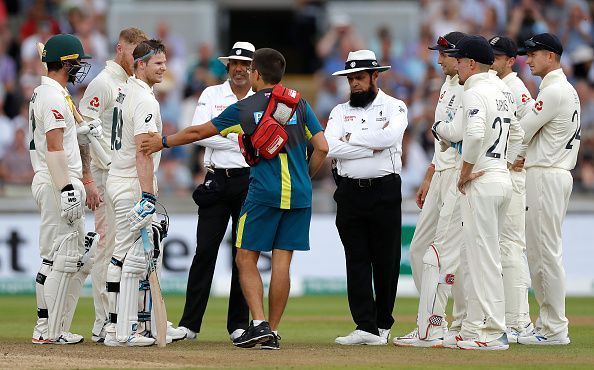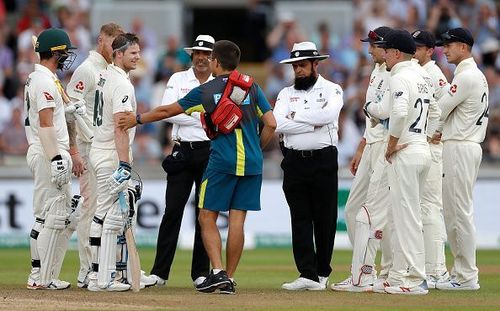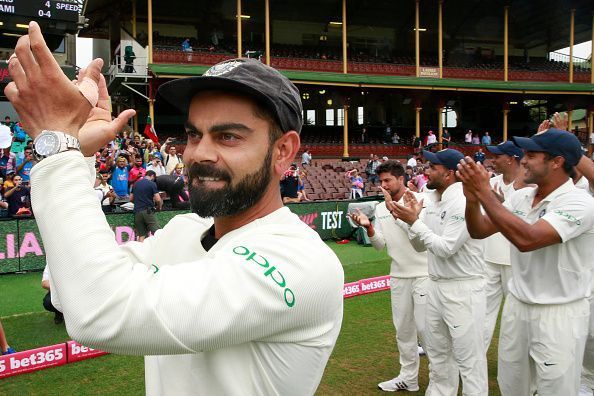
Analyzing the World Test Championship: Is the concept feasible?

The 1st of August 2019 will go down as a red letter day in the history of Test cricket. The opening day of the 2019 Ashes saw the World Test Championship getting underway.
Nine teams - namely India, England, South Africa, Pakistan, New Zealand, Australia, Sri Lanka, West Indies and Bangladesh - will participate for the coveted trophy. Zimbabwe, who are currently suspended by ICC, along with the new entrants to Test cricket i.e. Ireland and Afghanistan, will not be a part of the initial World Test Championship.
The nine teams as mentioned above will battle it out in 27 bilateral series over the period from August 2019 to March 2021, after which the top two teams will battle it out for the trophy in a final match which will be played at Lord's in June 2021.
Each of the nine participating teams will play six series each (three at home and three away). The series will consist of two, three, four or five Tests. Each win will accumulate points for the teams; the point distribution system is as follows:
In a two-match Test series, a win will fetch the team 60 points per win, a draw will fetch 20 and a tie 30. In a three-match Test series, a win will fetch 40, a draw 13.3 and a tie 20. The point distribution for a four-match Test series will be 30 per win, 10 per draw and 15 for a tie. And teams will have 24 points for a win, eight for a draw and 12 for a tie in a five-match Test series.
The number of Test matches per team is as under:
England 22, Australia 19, India 18, South Africa 16, West Indies 15, New Zealand and Bangladesh 14 each, Sri Lanka and Pakistan 13 each.
The need for World Test Championship

With the growing viewership and fan-base of T20 cricket and T20 leagues all over the globe, the ICC had to take radical steps to popularize Test cricket.
Test cricket, the ultimate form of cricket, has seen smaller crowds being attracted to the stadiums. Apart from India, England and Australia where crowds are seen in large numbers, there are not many spectators in the grounds in West Indies, Sri Lanka, South Africa, New Zealand and UAE.
The younger generation in particular prefers to watch a T20 game, which will give a result within a period of three or four hours, rather than wait for a period for five days to get a result. At times even after five days the Test ends in a draw, making it even more frustrating for casual spectators.
It is no surprise that the advent of T20 cricket has sidelined Test cricket to an extent.
With the introduction of the World Test Championship, every Test match would be of significance as there are points attached to every win. Teams would prefer to have a result rather than playing out a draw (which would give them fewer points compared to a win).
The teams will also follow each other's progress and look to give their best in Test cricket. There have been instances in the recent past when cricketers have preferred T20 cricket to Test cricket. But with a Championship trophy being associated with Tests now, every cricketer will have that extra motivation to play the long format.
The World Test Championship is the need of the hour to popularize Test cricket among the youth of today and to ensure that the ultimate form of cricket does not suffer amid the growth and popularity of T20 cricket.
Is the concept feasible?

The biggest flaw in the World Test Championship is that teams do not play equal amount of matches and hence it is difficult to adjudicate the best team among them. For instance, England have 22 Test matches scheduled during the cycle of the first World Test Championship, whereas teams like Pakistan and Sri Lanka have only 13 Tests each.
Another flaw in the concept is the point distribution system. While a win in a two-match series will fetch 60 points, a win in a five-match series will fetch only 24 points. In reality, a win is a win; the discrimination between the kinds of victories seems absurd.
The scheduling of the matches may also be have to looked into by the ICC in the future. Bangladesh for instance do not play a single Test during the World Test Championship outside the sub-continent, as they have away matches against India, Pakistan and Sri Lanka.
Understandably, the Ashes cannot be reduced to a two-match Test series. Similarly, an India vs Australia series cannot be played over just two matches either. However, if the ICC can get the teams to play even number of games in the cycle, that will reduce the criticism.
The ICC Test Championship is a great initiative for popularizing the Test format, and if the minor flaws are taken care of, the Championship would be here to stay. An even contest between bat and ball, and points being associated with every Test win, are positive steps; hopefully, Test cricket will benefit from the Test Championship.